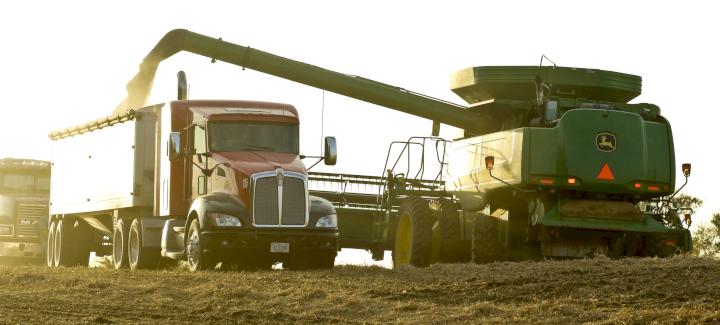
Every year, growers hear from a number of agronomists presenting the latest local plot results from on-farm strip trials or county/state extension plots. But how can growers use that information to help their operations? Understanding the information, how it was derived and what it demonstrates can lead to better decisions for your fields.
Before we dive into understanding the differences between plot types, we need to understand a basic formula for crop yield. Crop yield is always determined by the interaction of genetics in the environment in a given management system. We might write it as a mathematical formula as:
Genetics x Management x Environment = Yield
Genetics are only one-third of the equation, but they are one of two elements that we can control. Obviously, we have no control over the environment or Mother Nature. County/state extension or third-party plots are often replicated, randomized plots designed to demonstrate the difference between hybrids with statistical difference. However, merely noting the top yielders doesn’t tell the whole story. These plots generally report an LSD, or least significant difference, which designates the number (typically in bushels/acre) that separates entries without making them significantly different. For instance, if hybrid A made 152 bu/ac and hybrid B made 141 bu/ac and the LSD of the plot was 13 bu/ac, that data indicates that hybrid A was not better than hybrid B, but rather random chance likely accounted for the difference in the two.
Plots planted by individual growers, co-ops and seed providers are often strip trial plots. Strip trial plots report individual hybrid performance in a given location in a larger context, but without the benefit of being randomized and replicated. That is, they generally do a better job of helping us understand how a given product performs in variable soils or changing soils across a field. These plots generally report a standard deviation (SD) or a coefficient of variation (CV). SD is a mathematical formula that reports one deviation from the mean in a “normal” distribution or bell curve. CV states the SD as a percentage. Both of these terms describe essentially the same thing, which is how far did the average of product A deviate from the mean of the plot. For example, if hybrid A yielded 152 bu/ac and the average of the plot was 155 bu/ac with a SD of 6, the data indicates that hybrid A was within the normal distribution of hybrid yields in that plot, regardless of overall yield numbers.
At Stine, we report plot performance in percent of plot average, so products of similar maturities that demonstrate plot performance of 100 percent or greater are within the normal distribution of hybrid yields in these plots.
Another thing important to understand about plot data is that it reports only the performance of these products in a particular management system and environment in which they occurred or, to put it differently, what that hybrid yielded in this specific year with that management style. Examining several years of information or asking how this product performed in a drought-stricken area or in good corn-growing weather is important. Another way to look at this is to cross reference how the hybrid(s) performed in an area that experienced different weather from your area.
In summary, try to understand the relationship between the hybrid(s) or genetics and the management systems to the environment (genetics x management x environment = yield).
Takeaways:
- Don’t plant plot winners without doing your research. Ask for several years or cross-referenced locations of plot results. If the winner has consistently been in the top half of the plots, then choose that hybrid for its yield consistency and stability, not because it won a strip trial plot one year.
- Learn product strengths and weaknesses. Understanding the plot location, management system and soil characteristics will help you understand what products excelled and what products suffered in that environment. Then choose products based on the similarity to your fields and management practices that have been consistent over time.
- Prioritize the portfolio over a single product. Choose a portfolio that will bring genetic and trait diversity that fits the needs of your operation. Not every farm requires traits that provide insect and herbicide protection. Those traits bring convenience, but at the cost of yield where they are unnecessary. Genetic diversity will help guard against the one uncontrollable factor all growers face — Mother Nature.
For more information on how to decipher plot data or to learn how Stine corn and soybeans performed in our 2020 yield trials, contact your local Stine sales agronomist.
Related Articles
-

Stine® to offer Syngenta’s Victrato® soybean seed treatment in 2026
December 2025 in Agronomy
-

Use Stine’s XP® seed treatments to prevent early injury to your crops
December 2025 in Agronomy
-

Understanding Stine’s enhanced oil profile soybeans
December 2025 in Agronomy
-

Soil sampling sets the stage for spring
November 2025 in Agronomy



